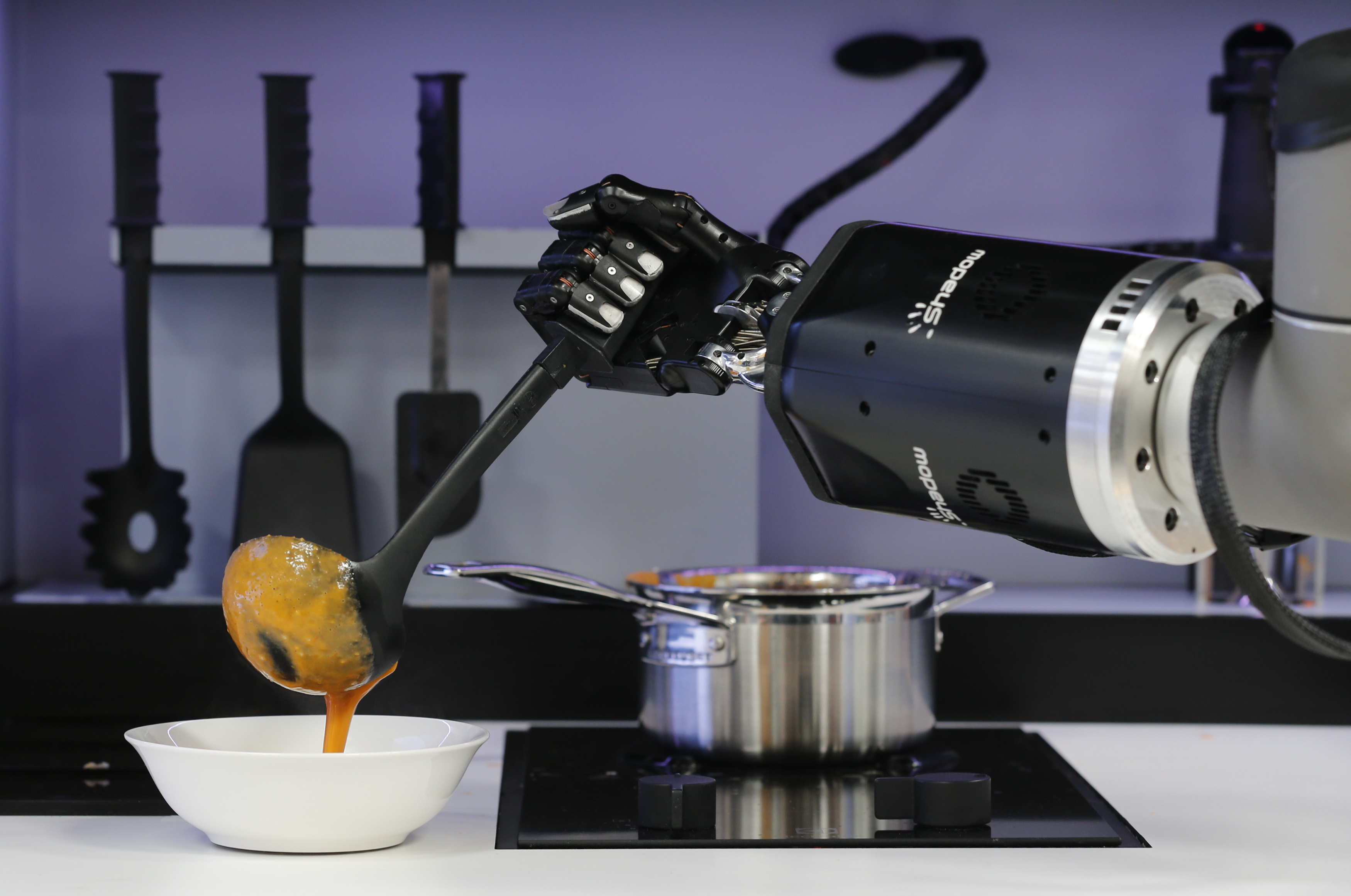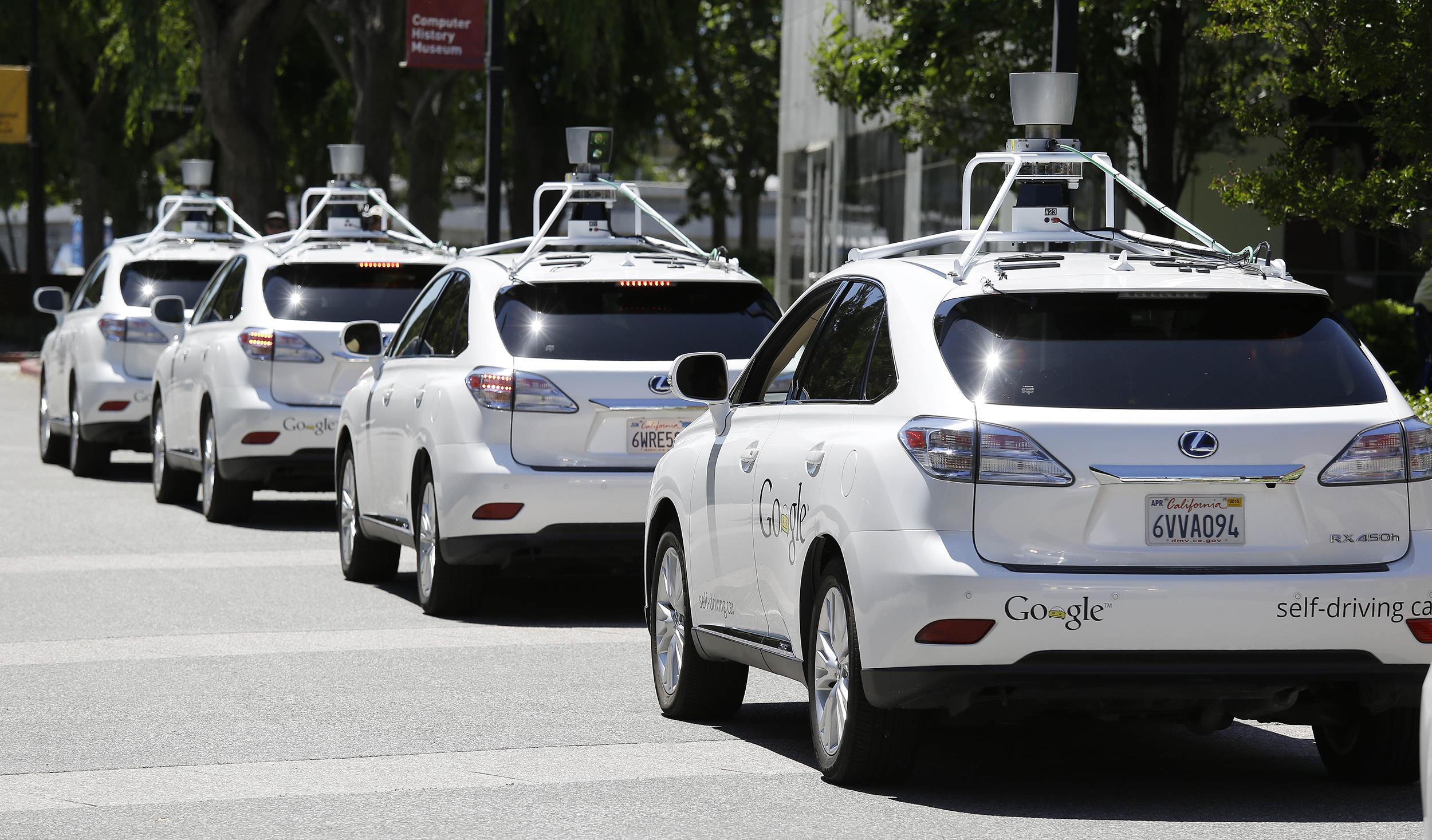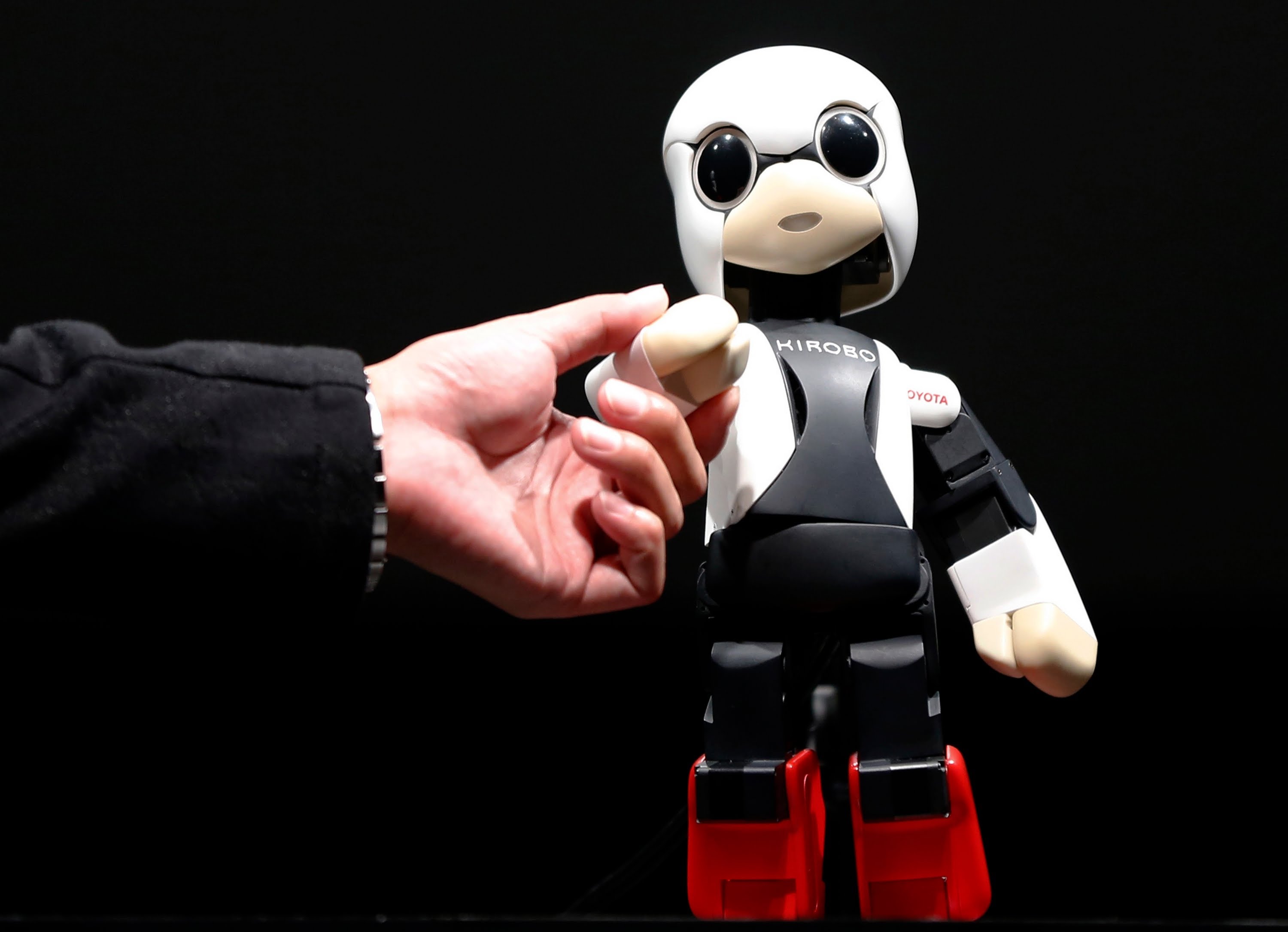How technological innovation will change everyday life

Robots can significantly improve the quality of our lives at home, at work and on vacation . Specialized robots that work next to people will create new jobs, improve the quality of existing jobs, and generally give people more time to focus on what is interesting, important and exciting to them.
Travel to work in self-driving carslet you read, reply to emails, watch videos and even take a nap. Having delivered one passenger to the destination, the self-driving car will be able to pick up another, coordinating with other self-driving cars in a system that is designed to minimize traffic and waiting time. In general, all the time of movement in such a car will be safer and more effective than in a car under human control.
However, the goal of robotics is not to replace humans through mechanization and task automationand find a way for machines to help people and collaborate more effectively with them. Robots better than humans process digital data, pick up heavy objects and, in certain situations, move with greater accuracy. People better than robots do abstract tasks, which require generalization and creative thinking, due to their ability to reason, recall similar cases from previous experience, and also thanks to the gift of imagination. Working together, robots and people can complement each other's skills and thereby increase the productivity of their work.

A robot in a prototype robotic kitchen created by Moley Robotics cooks crab soup at the company's booth at the world's largest industrial technology fair Hannover Messe, which was held in Hanover on April 13, 2015.
However, there are significant differences between what robots are today and those fantastic promises about the upcoming era of “ubiquitous robotics,” when robots will be part of everyday life, as integral and widespread as computers and smartphones today, performing many specialized tasks. and often working near people. Modern research is aimed at improving the assembly and design of robots, how they move and manipulate objects, how they reason, how they perceive their environment and how they interact with each other and with people .
Creating a world of pervasive specialized robots causes serious difficulties, but these are not the problems that scientists faced almost three decades ago when they dreamed of a world where computers would become an integral part of human society. Mark Weiser, who was the principal fellow at the Xerox Research Center in Palo Alto in the 1990s and is considered the father of the so-called ubiquitous computing, said: “The most advanced technologies are those that disappear. They become part of everyday life, integrating. into it so much that they become completely invisible. " Computers have already reached such ubiquity. In the future, robots will be as common.
Your own personal robot
Computers are already ubiquitous in everyday life. In the future, robots will also be as common.
The capabilities of a robot are determined by what its apparatus can do, as well as by what its brain can calculate and control. Today's robots can perform basic movements on the ground, in the air and in water. They are able to recognize objects, note environmental features, perform loading / unloading operations on the conveyor, imitate simple human movements, acquire simple skills, and even act in coordination with other robots and human partners. So, machines with all these functions can be seen at the RoboCup Robot Cup, during which teams of robots coordinate to make a pass, send the ball and score goals.
Such functionality was made possible through the use of innovation in the development of robotics, as well as through improvements in algorithms that control the perception, thinking, control and coordination of the robot. Robotics has gained many advantages thanks to advances in a wide range of fields: computing, data storage, the Internet, wireless communications, electronics, design and manufacturing of tools.
The electromechanical components used in robotic devices have become more reliable, and the knowledge base available for intelligent machines has also grown thanks to the Internet, and as a result this has made it possible to even lower costs. So users got a real opportunity to switch from using a personal computer to using a personal robot.
Self-driving cars can reduce the number of cars on the road by about 80 percent, while also reducing the duration of the trip and environmental pollution.
In recent years, robotics has become increasingly apparent in the field of transport. Many major car manufacturers have announced plans to create self-driving cars and predict that consumers will be able to purchase such vehicles in 2020. So google self-driving carsAlready traveled about 2 million miles, and during this time there were only 11 minor accidents, most of which are caused by human errors; and this summer the company begins testing cars on public roads. Self-driving car projects have also been launched at several universities around the world. Meanwhile, California, Florida, Michigan, Nevada have already passed laws that allow the use of self-driving cars on state roads, and many other state legislatures in the United States are already considering this possibility. Recently, an annual report from the Singapore Ground Transportation Authority was published, which noted that "self-driving shared vehicles" is a fleet of self-driving cars,

Robot, drive my car: Google self-driving cars, May 2014.
Self-driving cars are not only a means of luxury: as the costs of their production and maintenance fall, their distribution can significantly improve the entire public transport system. Imagine a public transport that operates in two planes. The first is a network of large vehicles, such as trains and buses, which will be used for long trips. The second is an additional fleet of small self-driving cars that will be used for short individual trips, picking up passengers at major stops (they can also be used for individual trips almost anywhere). In 2014, a project called “Urban Mobility of the Future”, created by the Alliance Research and Technology Alliance (MIT) team of Singapore and the Massachusetts Institute of Technology (MIT), invited the audience to try a ride on a self-driving cart, reminiscent of golf carts, in the Chinese garden in Singapore, which is a park with winding alleys surrounded by trees, with benches and a lot of people walking. More than 500 people took part in this project. Robotic cars drove along paths, traveled around pedestrians and brought passengers to the places they needed.
Today, this level of use of self-driving cars is possible only in conditions of low speed and a simple route. Robotic vehicles still cannot cope with the difficulties of movement “in the wild”, including inclement weather and difficult traffic situations. These issues are the focus of research.
How do you like it
Widespread adoption of robots will require the natural integration of intelligent machines into the human world, rather than human integration into the world of machines. Despite recent significant progress in this area, problems remain in three important areas. The development and creation of new robots still takes too much time, already existing robots are very limited in their ability to perceive the world and judge their environment, and communication with robots is still quite fragile.
Today there are many different types of robots, but the production of any of them takes a lot of time. Existing robot housings are difficult to adapt or modify, and thus robots have limited capabilities and applications. Today, the rapid production of new robots, additional modules, devices and specialized tools is not possible, since the design, installation and programming processes are quite lengthy and time-consuming. What is really needed is the development and manufacture of tools that accelerate the production of custom robots. Now a team of researchers from Harvard University, the Massachusetts Institute of Technology and the University of Pennsylvania are working on a robot compiler, which can focus on a specific specification. For example, they say to you: “I want a robot that will clean the room,” and you develop a robot, a plan for its manufacture and a specialized programming environment for using it.

The two-legged humanoid robot Atlas, originally developed by the American company Boston Dynamics, was presented to media representatives in Hong Kong, October 2013.
Better-tuned robots will help automate a wide range of tasks. Consider production. Currently, the use of automation in enterprises is uneven in all industries. Engineering automates approximately 80 percent of its assembly processes, which consist of many repetitive activities. But in electronics, including the production of mobile phones, only 10% of processes are automated. This is due to the fact that such products are often modified and manufactured according to special customer specifications. Custom-made robots could help fill this gap by reducing the readjustment time for automation in industries where customization is often applied and the products have a fairly short lifespan. Specialized robots will know where the necessary items are stored, how to pack them, how to interact with people, how to transport parts from one place to another, and how to reconfigure the conveyor. In a factory equipped with such robots, processes will be controlled by human workers, and robots will help them.
Comprehension abilities
The second problem that arises when integrating robots into everyday life is the need to increase their comprehension abilities. Modern robots have only limited thinking, since their processing of information is strictly limited. Everything that the robot does is written using simple instructions, and the scope of understanding the robot is entirely contained in its program. In addition, the robot's perception of its surroundings through its sensors is very limited. Tasks that are given to people quite easily, for example, the answer to the question “Have I been here before?” Is extremely difficult for robots. To record the features of the places in which they are, robots use sensors, for example, cameras and scanners. But for a car, it’s quite difficult to determine the difference between the place in which it was already and another that contains the same objects. Generally, robots collect too much low level data. Modern machine learning research has focused on developing algorithms that can help extract information that is useful to the robot from large data sets. Such algorithms will help him to summarize his data and thus significantly reduce, for example, the number of images that the robot needs to answer the question "Have I been here before?"
Robots also cannot cope with unexpected situations. If the robot encounters circumstances for which it was not previously programmed or that go beyond its capabilities, the system generates an error and stops working. Often the robot cannot report the cause of such an error. Robot programs must be adjusted in such a way as to adapt to the environment and easier to interact with people, their environment and other machines.
Today, everyone who has access to the Internet (including robots) can easily get incredible amounts of information. Robots can use this information to make more informed decisions. For example, a robot for walking a dog can find weather data online, and then use its already saved data to determine the ideal duration of movement and the optimal route: if the street is hot or, conversely, rain, then the walk will take only a few minutes, and if the weather good, then the robot will choose a long walk in the park, where there are other dogs.
How to help the robot?
Integrating robots into everyday life also requires a more reliable connection between robots, as well as between robots and humans. Despite advances in wireless technology, there are still aspects that prevent the exchange of data between robots. It’s still difficult to model and predict how well robots can communicate in any environment. In addition, the effectiveness of robot control methods that rely on the communication technologies used today is reduced due to extraneous signals and data, as this makes sending and receiving commands difficult. More robust communication approaches are required to ensure the right throughput when needed. One promising new approach to this problem is to measure the quality of communication around the robot - instead of

Kirobo humanoid robot shakes hands with Tomotaka Takahashi, CEO of Robo Garage Co, June 26, 2013.
Communication between robots and humans is currently very limited. Although there are audio sensors and speech recognition software so that robots can understand and respond to basic voice commands (“Move to the door”), such communication is very limited in terms of coverage and vocabulary. Deeper communication between a person and a robot will allow the latter to ask people for help. It turns out that when a robot performs a task, even a little human intervention completely changes the way it solves the task before it, and significantly expands the capabilities of the machine to do more work. A research team at the Laboratory for Informatics and Artificial Intelligence at the Massachusetts Institute of Technology recently developed a system by which a group of robots assembledfurniture from IKEA . Robots worked together while assembly parts were within their reach. When a part, for example, a table leg, was out of reach, the robot determined the problem and asked the person to convey the necessary part to him, using English sentences for this. Having received the necessary part, the robot continued to work on the assembly. The ability of a robot to understand a mistake and ask for help from a person is a huge step towards more effective and productive cooperation between people and robots.
Thanks a lot, fellow robot
Personal computers, wireless technologies, smartphones and downloadable applications have democratized access to information, and completely changed the way we live and work. In the future, robots will contribute to this digital revolution, expanding it into the physical world and everyday life, and the consequences of such a development will be extremely important and serious.
In a world where there are many robots, people can wake up in the morning and send their personal robotic assistant for shopping to the supermarket to buy fruit and milk for breakfast. It is also possible that one day you can send your robot to the store in a self-driving car, and in the supermarket he will use a self-driving trolley that will go to exactly the places where the products you need are located, and will also give you information about their freshness, origin and nutritious values and help visually impaired customers navigate the store safely. Robots will help people by automating physically difficult or tedious types of work: hanging shelves, washing windows, sweeping sidewalks, delivering orders to customers, and more.
